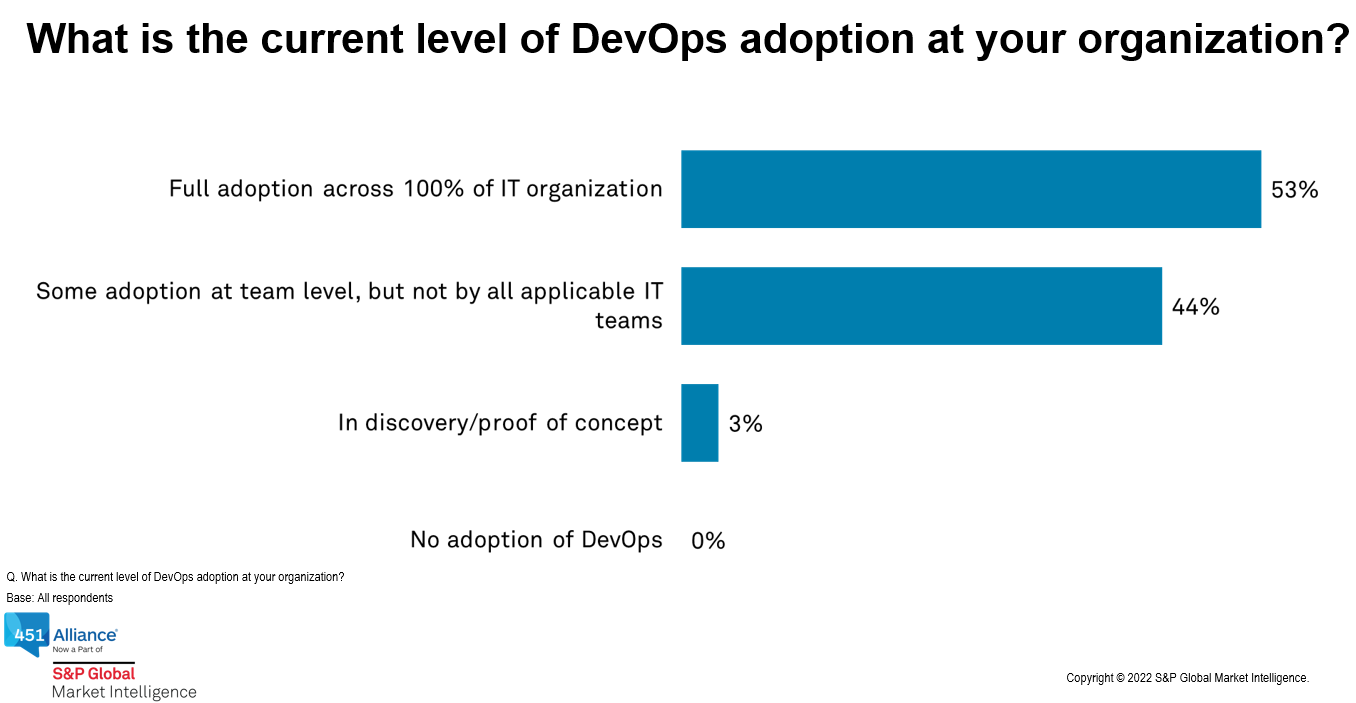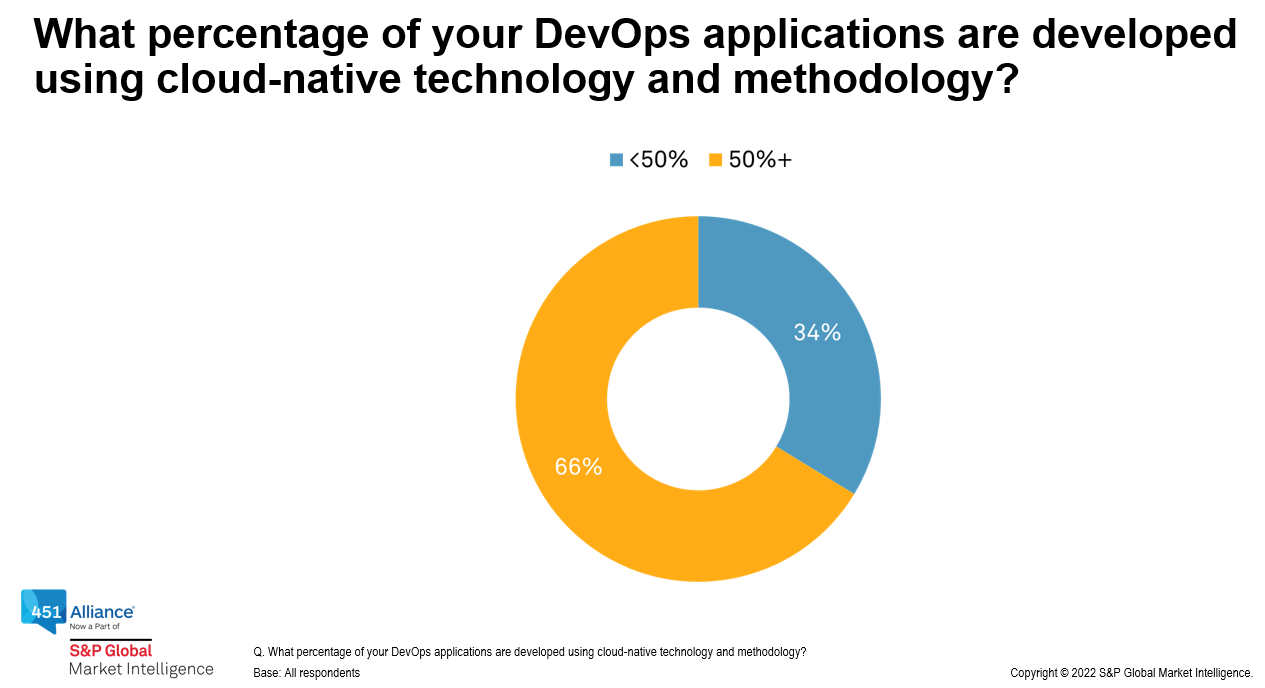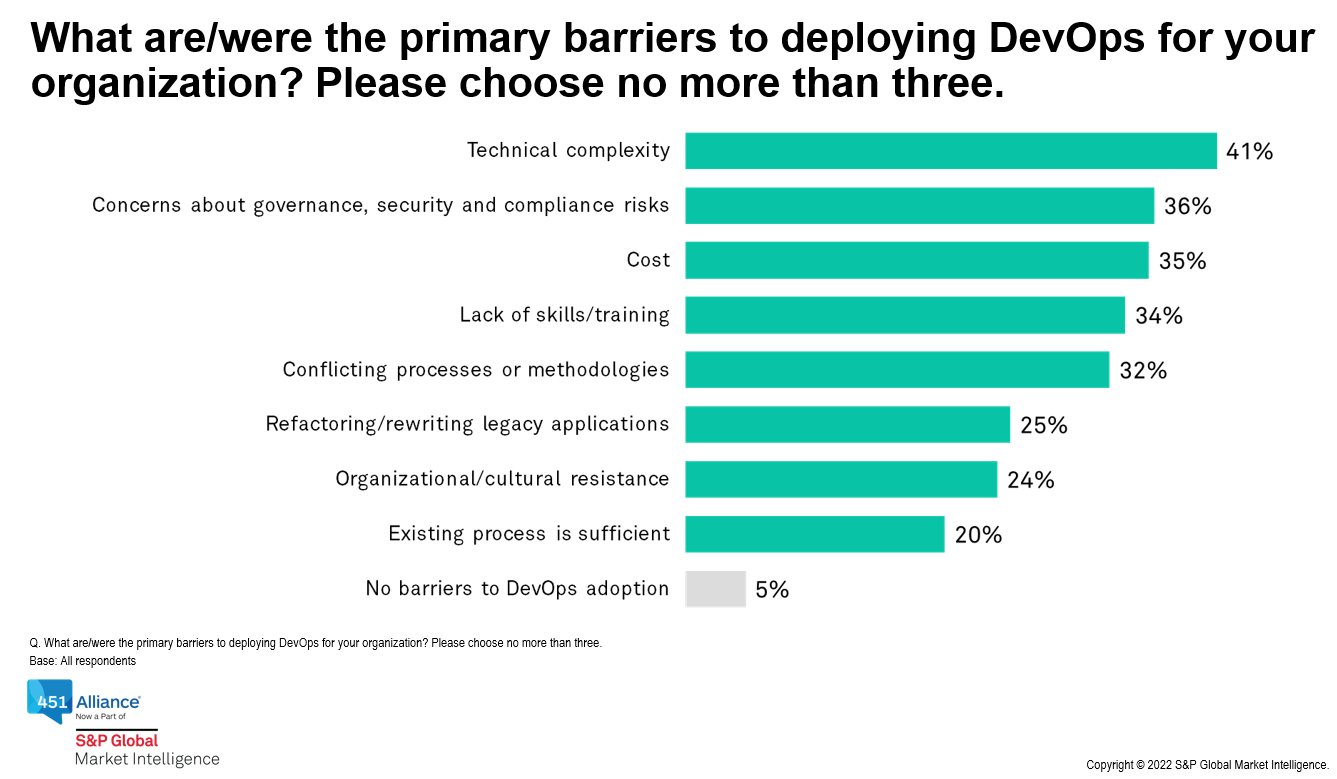
In information technology, as in life, the old sometimes becomes new again, usually with the help of a refresh element. Incorporating a new feature, twist or perspective can give a mature tech new life, broader applicability and a revitalizing buzz.
Because IT is an ‘innovate or die’ kind of business, even a well-embraced technology must evolve in order to maintain relevance. In the case of DevOps, a 15-year-old practice that represents a mashup of software development with IT operations, that new transformative force is cloud-native computing.
DevOps’ increasing rate of adoption
In their joint webinar, 451 Research senior research analysts Jay Lyman and Jean Atelsek presented insights around the growth of DevOps and its new cloud native-fueled trajectory. Many of their observations were drawn from surveys conducted within the 451 Alliance.

Perhaps the best indicator of DevOps’ emergence as a mainstream IT approach has been its continued growth despite the pandemic. “We saw much more acceleration and initiation of deployments compared to slowdowns or stoppages amidst the COVID-19 pandemic,” said Lyman, who tracks DevOps and cloud-native technologies for 451 Research. “[In terms of] the basic idea of Devs [developers] working with Ops [IT operations], we see very strong adoption [among] organizations that have released applications to production in the last year.”
While Lyman said the survey data points to better than half of all survey respondents instituting DevOps enterprise-wide, another 44% reported implementation of the strategy at the team level.
“DevOps has emerged as an integral part of, or sometimes a starting point for, modernization and migration to the cloud and digital transformation,” said Lyman.
Atelsek, who serves on 451 Research’s cloud transformation team and closely watches cloud-native strategy, agreed: “I see it being an engine of organizational transformation…. Operations teams are able to [transition] a lot of operational tasks into code, and they’re able to do that while freeing developers to [work within] a platform that lets them code and test and build software.”
Cloud native orients DevOps toward cloud-ready deployment
Lyman explained that cloud-native methodologies “are designed from the ground up to take advantage of cloud computing architectures and automated environments, and to leverage things like API-driven provisioning and auto scaling and other operational functions.”
Among those organizations taking part in the 451 Alliance study on the subject, two-thirds of respondents reported that the majority (>50%) of their DevOps applications were cloud-natively developed.

Considering the primacy of the cloud as a compute venue, this finding makes perfect sense. Atelsek elaborated on the role of cloud native in directly addressing customer needs, adding that success in individual use cases helps promote the concept across teams and, ultimately, enterprise wide. “Some teams that are more forward-thinking or…much more customer-driven [and] customer adaptive are going to reach out and look at deploying these [cloud native] technologies,” she observed. “If they’re successful, [we see them] evangelizing them across the organization. We’ve seen that bottoms-up adoption in some cases, and among developers in particular.”
Lyman echoed the emergence of a customer-focused approach within DevOps and cloud native. “When DevOps began, it was all about elegant code and scripts, and ‘if you build it, they will come,'” he said. “Now it really matters what kind of experience the user is having.”
Not a “one size fits all” proposition
As with the cloud in general, many organizations are realizing that the immense value of cloud-native computing doesn’t necessarily extend to every type of workload or IT use case.
“Cloud native isn’t for all applications,” said Atelsek. “In some cases, to move a monolith to microservices is a whole lot of work and perhaps, it’s not the right architecture for that application.”

Added Lyman: “The public cloud fever of a few years ago, where everything was going to go into the public cloud, has abated and now there’s a realization that, hey, not all of this has to go to the public cloud. It behooves us to keep some of this on-prem.”
It’s not just about the tech
As with so many IT methodologies, DevOps (and its cloud-native cousin) is now much more than a set of technological rules. As the concept has matured, the processes have broadened into a full-blown movement in terms of the resource that delivers it, the vendors that support it, and the funding it garners.
Lyman views DevOps and cloud-native development as a gestalt – a wholistic and comprehensive platform that is more than the sum of its parts. “DevOps is not just technology by any means. It’s just as much, if not more…a culture and a methodology and how teams are set up, how they’re supported and how they’re aligned,” he observed.
As a member of the 451 Alliance, you can watch How Cloud Native is Enabling the Next Generation of DevOps at your convenience. In fact, all 451 Alliance reports and materials are available through our member portal for on-demand viewing, at no cost to Alliance members. It’s our way of thanking you for your contribution of IT knowledge and experiences through participation in our quantitative and qualitative studies. We appreciate and welcome your continued participation.

